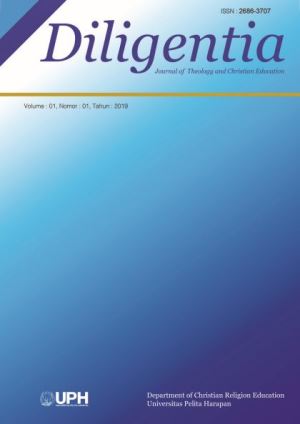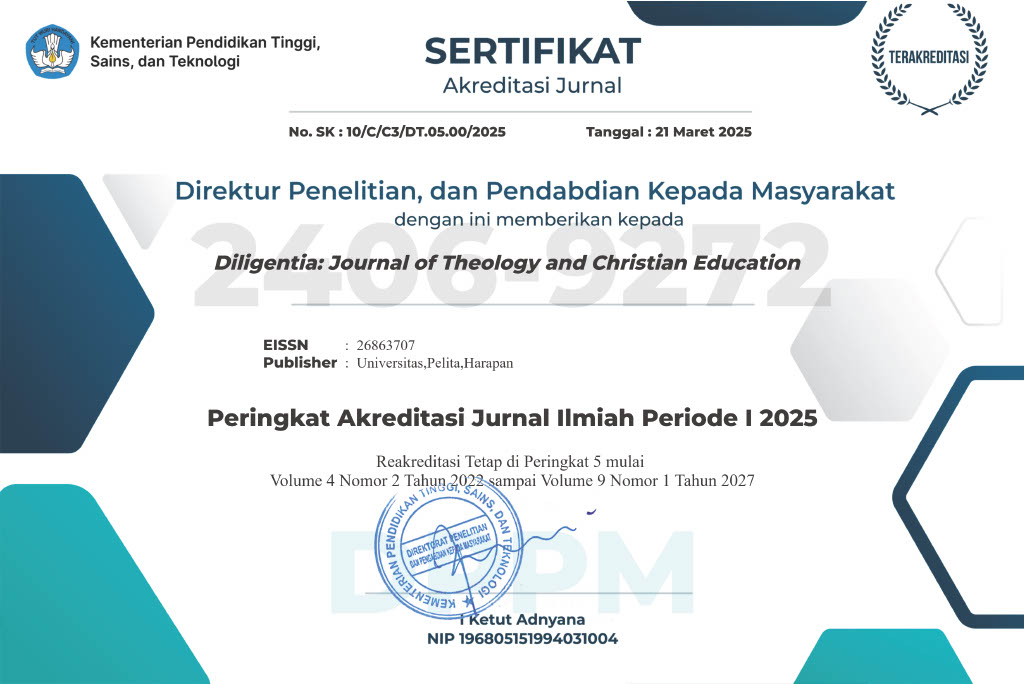Christ’s Supremacy: Colossians 1:15-20 and Its Implication in Education
DOI:
https://doi.org/10.19166/dil.v1i1.1887Keywords:
Supremacy of Christ, In Him, Through Him, For Him, All Things, Image of Invisible God, Out of the Death, First-Born,Abstract
Supremacy of Christ in Col. 1:15-20 is essential to Christian faith. Many attempts have been made to examine this passage and mostly from the theological point of view. The aim of this article is to reexamine this passage and propose an analysis from the perspective of Christian education (with the implications) by firstly exegeting the passage in Colossian’s context. The exegesis begins with providing the translation form the Greek text, proposing the structure followed by demonstrating the critical issue in each section of the structure, and finally summarizing the principles. The next step is to demonstrate the analysis from the perspective of Christian education on every section in the structure, followed by the significance of this passage in Christian education.
References
Achtemeier, Paul J., Joel B. Green, and Marianne Meye. Thompson. Introducing the New Testament : Its Literature and Theology. Grand Rapids, MI: W.B. Eerdmans Pub, 2001.
Balchin, John F. “Colossians 1:15-20: An Early Christian Hymn? The Arguments from Style.” Vox Evangelica 15 (1985): 65-94.
Barth, Markus, and Helmut Blanke. Colossians: A New Translation with Introduction and Commentary. Translated by Astrid B. Beck. New York: Doubleday, 1994.
Bruce, F. F. The Epistles to the Colossians, to Philemon, and to the Ephesians. Grand Rapids, MI: Eerdmans Publishing, 1984.
Danker, Frederick William, ed. A Greek-English Lexicon of the New Testament and Other Early Christian Literature. 3th Edition (BDAG). Chicago: Chicago University Press, 2000.
Ferguson, Everett. Background of Early Christianity. 2nd ed. Grand Rapids, MI: William B. Eerdmans Publishing, 1993.
Gordley, Matthew E. The Colossian Hymn in Context: An Exegesis in Light of Jewish and Greco-Roman Hymnic and Epistolary Convention. Tubingen: Mohr Siebeck, 2007. https://doi.org/10.1628/978-3-16-151571-2
Groome, Thomas A. Pendidikan Agama Kristen: Berbagi Cerita Dan Visi Kita. Translated by Daniel Stefanus. Jakarta: BPK Gunung Mulia, 2017.
Lohse, Eduard. Colossians and Philemon: A Commentary on the Epistles to the Colossians and to Philemon. Philadelphia: Fortress Press, 1971.
Martin, Ralph P. Ephesians, Colossians, and Philemon. Atlanta: John Knox Press, 1991.
O’Brien, Peter. Colossians, Philemon: Word Biblical Commentary Vol. 44. Waco, TX: Word Books, 1982.
O’Neill, J. C. “The Source of the Christology in Colossians.” New Testament Studies 26, no. 1 (October 5, 1979): 87-100. https://doi.org/10.1017/S0028688500008687
Pazmino, Robert W. Fondasi Pendidikan Kristen: Sebuah Pengantar Dalam Perspektif Injili. Translated by Deny Pranolo and Yanti. Bandung, Indonesia: STT Bandung, 2012.
PokornyÌ, Petr. Colossians : A Commentary. Translated by Siegfried S. Schatzmann. Peabody, MA: Hendrickson Publishers, 1991.
Talbert, Charles H. Ephesians and Colossians. Grand Rapids, MI: Baker Academic, 2007.
Wright, Nicholas. T. “Poetry and Theology in Colossians 1. 15-20.” New Testament Studies 36, no. 3 (July 5, 1990): 444-68. https://doi.org/10.1017/S002868850001585X
Downloads
Published
How to Cite
Issue
Section
License
Authors who publish with this journal agree to the following terms:
1) Authors retain copyright and grant the journal right of first publication with the work simultaneously licensed under a Creative Commons Attribution License (CC-BY-SA 4.0) that allows others to share the work with an acknowledgement of the work's authorship and initial publication in this journal.
2) Authors are able to enter into separate, additional contractual arrangements for the non-exclusive distribution of the journal's published version of the work (e.g., post it to an institutional repository or publish it in a book), with an acknowledgement of its initial publication in this journal.
3) Authors are permitted and encouraged to post their work online (e.g., in institutional repositories or on their website). The final published PDF should be used and bibliographic details that credit the publication in this journal should be included














